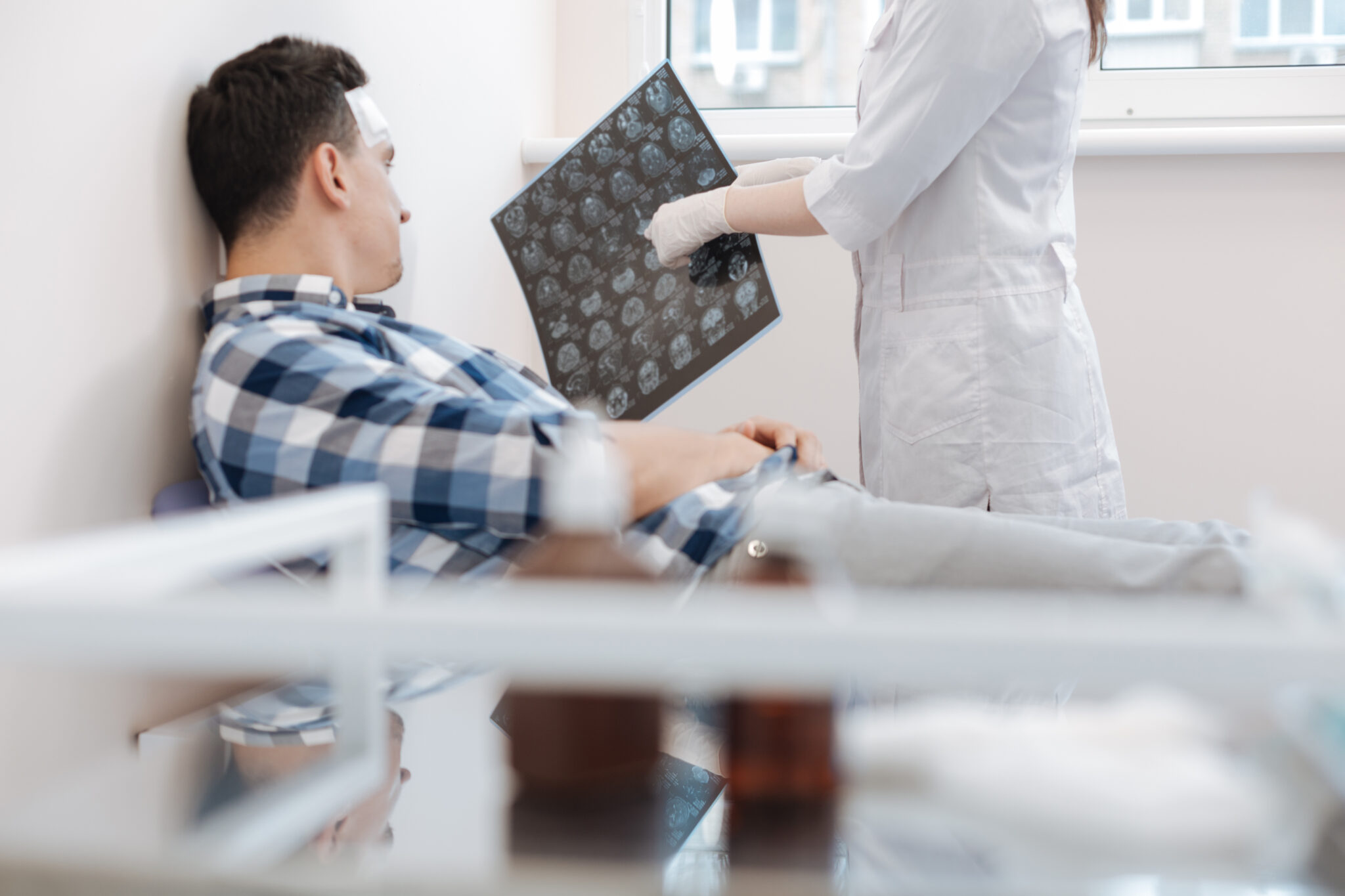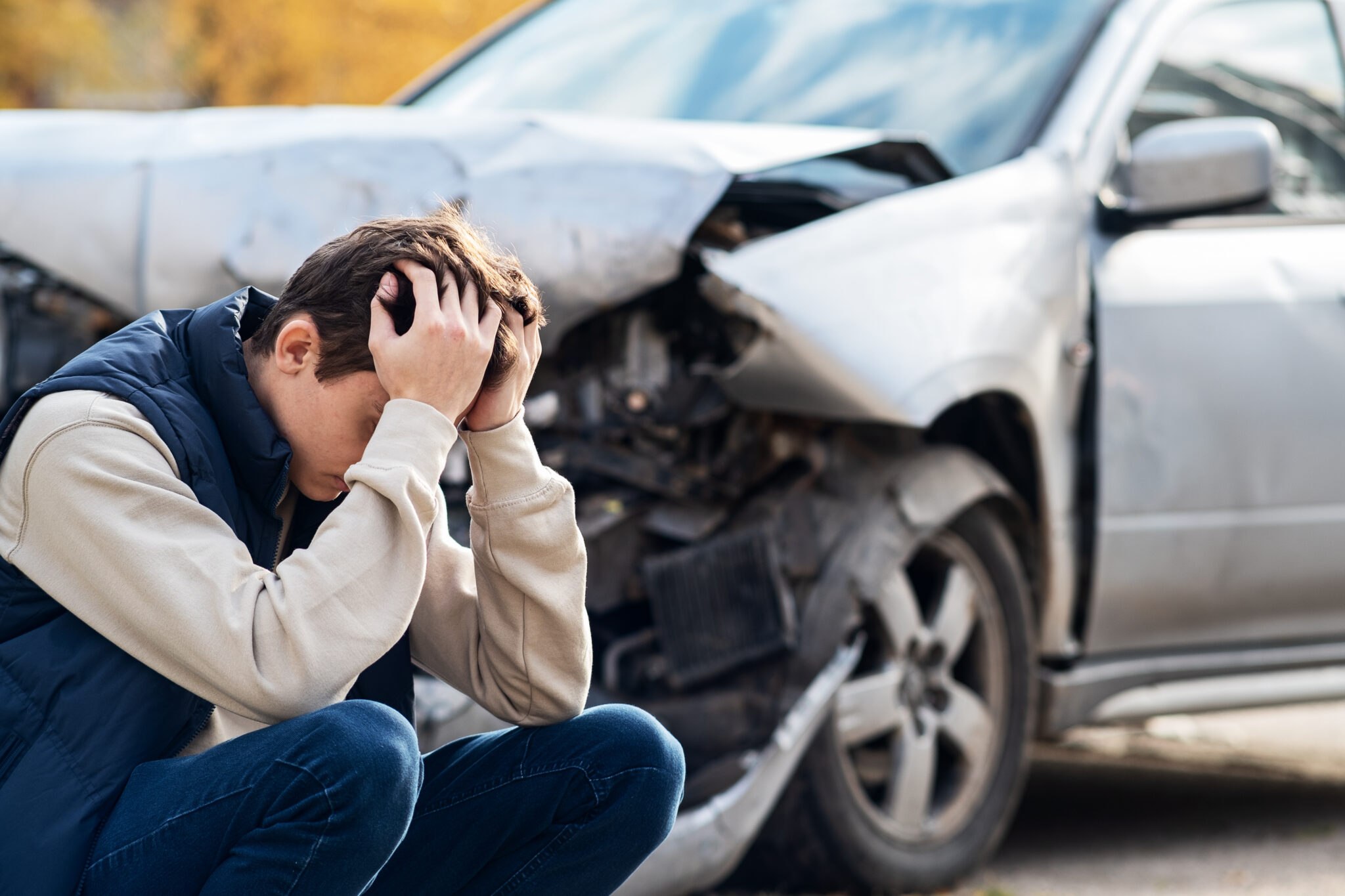Leg pain is common after a car accident, but it can have many causes. Unfortunately, crash survivors often assume their pain is “just bumps and bruises” that will go away on their own.
However, that dull or shooting pain may be a sign of a severe injury, like a herniated disc or a knee or hip injury. Understanding your leg pain’s cause is essential to both your personal injury case and your overall health.
In this post, our experienced personal injury attorneys discuss common causes of post-accident leg pain and what you can do to minimize it. We’ll also provide tips on how working with a personal injury lawyer can help you secure fair compensation for your injuries.
Common Causes of Leg Pain After an Auto Accident
Leg pain can be up in your hips, down in your feet, or anywhere in between. A crash can easily cause leg, ankle, hip, and knee injuries because our lower body contains many complex joints and supports most of our weight.
If your leg injuries are serious enough to alter your quality of life and impact you financially, you may have a personal injury case and be entitled to compensation.
The following are some of the most common causes of leg pain after a car crash, all of which could lead to a settlement or jury award:
1. Bruises, Cuts, and Hematomas
A car crash’s trauma can cause lacerations (cuts) and bruises (hematomas) in your legs and other body parts. While a cut will be obvious, deeper bruises may take a few days to fully appear. While most bruises and cuts heal on their own, some require stitches, surgeries, and medication.
If you suffer a deep laceration or develop dark, widespread bruising, see your doctor. These injuries likely need medical attention.
2. Broken Bones
You have more than 60 bones from your hips to your toes, and any of them can break in a car accident. Bones in the hips, legs, knees, and feet can have small fractures, clean breaks, or be shattered. Any broken bone, from the femur to the fibula to the phalanges, should be examined by a medical professional.
Serious leg fractures tend to be obvious due to pain and, in some cases, being visibly misplaced. Tiny hairline bone fractures are less easily detected, and are sometimes mistaken for soft tissue injuries. However, with time and stress, these small fractures can become more serious.
For example, imagine you bumped your leg in a car accident, and later learned you had a hairline crack in your knee cap (patella). If you continue to use the leg and put weight on it, that small knee fracture could turn into a serious knee injury.
Small fractures in leg bones can often heal on their own as long as the bone isn’t forced to bear too much weight or activity. Large and complicated broken legs require more healing time and intervention, perhaps pins, screws, plates, wires, rods, or even joint replacements.
Left untreated, broken bones can lead to chronic pain or cause long-term difficulties with walking and balance.
3. Soft Tissue Injuries
Injuries involving muscles, tendons, ligaments, and cartilage (sometimes called “soft tissue injuries”) are common in and around the knees, hips, lower legs, and ankles after a car crash. Symptoms of these injuries can include swelling, a popping sound, pain, weakness, and stiffness.
Sprains and strains, where your muscles and ligaments either stretch or tear, are incredibly common after car and truck crashes. While many of these injuries heal with medication, rest, and time, some require physical therapy and more intensive care. However, sprains and strains aren’t the only soft tissue injuries that you can suffer during a wreck.
Severe injuries to your leg’s ligaments, knee joint, and other structures can lead to surgery and cause long-term problems. If you’re experiencing severe pain and decreased mobility in your leg, your doctor may check you for a variety of soft injuries:
- Anterior cruciate ligament (ACL) injuries: The ACL stretches between the shinbone (tibia) and the thigh bone (femur) and can be damaged when the knee is impacted. This ligament injury inhibits your ability to twist and pivot your leg.
- Torn meniscus: The meniscus is knee cartilage that absorbs shock. If it’s torn in a crash, your knee will be very painful and won’t be able to bear weight. This knee injury often requires surgery.
- Posterior collateral ligament (PCL) injuries: The PCL stretches between the back of the leg and the thigh bone. Like the ACL, it can be damaged with an impact to the knee. This injury tends to be less common and less serious than an ACL injury, but it can still cause significant pain and inhibit movement.
- Medial collateral ligament (MCL) injuries: these ligaments stabilize the inner side of the knees (the sides that tough each other). These types of knee injuries cause pain, swelling, and a sense of weakness at the site.
RELATED: Can I Get Compensation for a Knee Injury From a Car Accident?
4. Deep Vein Thrombosis (DVT)
DVT is a blood clot deep within the body. Trauma to the leg, as well as surgery performed to treat that trauma, can cause deep vein thrombosis. In addition to leg pain, you may experience swelling and discoloration that isn’t due to the trauma itself.
If you have any of these unexplained symptoms, talk to a medical professional. Untreated DVT can lead to a pulmonary embolism—a potentially fatal blood clot in the lung.
5. Compressed Nerves and Herniated Discs
Sometimes, a car accident’s forces will stretch and pull at the discs in your back. If one of these discs rips or bulges, doctors call it a herniated disc—and it can press on the nerves in your spine, causing a kind of leg pain called radiculopathy or sciatica. Typically, the pain will start in the lower back and shoot down into the leg. You may also experience numbness and weakness in your leg.
You should talk to a doctor to ensure that a serious injury, like a herniated disc, isn’t causing your shooting leg pain. Medications, injections that reduce swelling, physical therapy, and even surgery may be needed—so don’t delay calling your physician.
6. Dislocation
If a bone comes loose from its joint, it’s dislocated. Hips and knees are among the most common bones to become dislocated during a car wreck. While you might not detect a hip or knee dislocation visually, someone experiencing it will have extreme pain and have a hard time moving the joint.
More than causing pain, dislocations can damage the surrounding tissues. X-rays, MRIs, and other imaging will be able to see the extent of this damage, and treatment might include immobilization, surgery, and rehabilitation.
Watch for Edema
Beyond the common leg injuries themselves, you may experience edema, or swelling due to fluid retention, in your thighs, calves, ankles, or feet. Trauma can cause temporary edema, though severe vein or tissue damage may make the condition permanent.
If you notice excess swelling in your lower body after a car accident, talk to your doctor immediately and include the diagnosis when you speak to your lawyer about your injury claim.
RELATED: Herniated Disc Settlements: What Is My Case Worth in Texas?
Getting Compensation for a Leg or Knee Injury After a Car Accident
As we mentioned earlier, leg pain, leg swelling, and knee pain after a car accident may indicate serious injuries that negatively affect your quality of life, from finances to simple daily pleasures.
If someone else’s careless or reckless actions caused your injury, it’s worth pursuing compensation. The amount you receive from a settlement or jury award will depend on the specifics of your personal injury claim (medical expenses, lost income, pain and suffering, etc.), but it can go a long way toward putting your mind at ease.
RELATED: Passenger Vehicle Rear-Ended by 18-Wheeler: Joel’s Story
Possible Complications for Your Leg Injury Case
Getting fair compensation for leg and knee car accident injuries is relatively simple when it’s clear who’s at fault and that the injuries are from the accident.
However, certain circumstances complicate the situation. If any of the following apply to your motor vehicle crash case, it’s time to get legal advice from an experienced personal injury attorney:
- Pre-existing conditions: Whether you had a pre-existing condition or not, the insurance company might try using it to minimize your injury. Discuss any leg surgeries or issues you had before the accident with your car accident lawyer.
- Multiple at-fault parties: If more than one party caused the accident, or if you bear some level of fault, it’s vital that you work with an attorney. Multiple at-fault parties will influence who must pay compensation and how much you are entitled to.
- Lack of insurance: If the at-fault driver has too little or no insurance, your case is instantly more challenging. An experienced accident attorney will know how to navigate things like uninsured motorist (UIM) coverage to your benefit.
In the meantime, avoid doing anything that could further complicate your case:
- Don’t talk to the insurance company: From trying to get you to admit fault to offering a fast, low-ball settlement, an insurance adjuster will probably contact you. Tell them to go through your lawyer.
- Don’t discuss anything about your case on social media: Anything you say online could end up being used against you. Tempting as it is to update people on your situation, keep this sensitive information off the internet.
- Don’t do anything to aggravate the leg injury: Ignoring doctor’s orders takes some responsibility off the at-fault party and jeopardizes your chance of full compensation. Go to your appointments and physical therapy, take your medications, and don’t do anything the doctor says not to.
What Should I Do if I Have Leg Pain After a Crash?
Sometimes, leg pain is a sign of a serious, life-changing injury requiring immediate medical treatment. You should never ignore your lower extremity pain—especially if you’re also experiencing muscle weakness or bladder or bowel issues. Instead, go to the ER or schedule an appointment with your doctor. Prompt medical care may help you make a fuller and faster recovery.
Next, document your financial and emotional losses. That means you should hold onto evidence that supports your claims, including:
- Your medical records and discharge slips
- Crash reports
- Letters from the insurance companies
- Pictures you took at the crash scene or of your injuries
- Medical bills, including bills for any medical devices (like crutches or a wheelchair)
- Estimates for your vehicle repairs
You should never ignore your lower extremity pain—especially if you’re also experiencing muscle weakness or bladder or bowel issues. Instead, go to the ER or schedule an appointment with your doctor.
This information will help your lawyer understand your losses and calculate the full extent of your damages.
Finally, before you speak with the insurance company or start negotiating a settlement, consult with an experienced personal injury lawyer. An attorney can help you avoid mistakes that damage your claims, give you peace of mind, and ensure that you get a fair settlement.
RELATED: 18-Wheeler Turns a Surgeon’s Life Upside-Down: Kelly B.’s Story
Crosley Law: San Antonio’s Trusted Personal Injury Law Firm
Crosley Law focuses its practice on serious car crash claims, including those involving leg pain. If you or a loved one suffered life-changing injuries in a wreck, we want to help you rebuild. Our personal injury lawyers use cutting-edge tactics and have a track record of success. Call 210-LAW-3000 | 210-529-3000 or complete our contact form to schedule your free consultation today.
The content provided here is for informational purposes only and should not be construed as legal advice on any subject.









